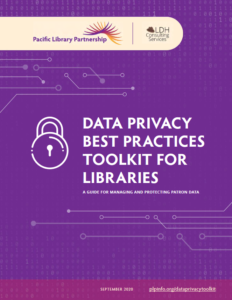Let’s start this week’s Cybersecurity Awareness Month post with a phrase that will cause some of you to scream into the void and others to weep at your work desk quietly:
Admin privileges on work computers.
Rationing admin privileges on work computers is one example of an information security practice that both protects and puts data at risk. Limiting the worker’s ability to install a program on their work computer reduces the chances of the system falling to a cyberattack via malware. It also reduces the chances of critical operations or process failure if an app downloaded without IT support breaks after an OS update or patch. On the other hand, limiting admin privileges can motivate some workers to work around IT, particularly if IT has consistently denied requests for privileges or installing new tools or if the request process resembles something that only a Vogon would conceive of. These workarounds put data at risk when staff work around IT to use third-party software with which the library has no contractual relationship or vendor security oversight. No contractual relationship + no evaluation of third-party privacy policies or practices = unprotected data.
IT is often their own worst enemy when it comes to information security. Staff don’t like barriers, particularly ones they see as arbitrary or prevent them from doing their jobs. Each information security policy or practice comes with a benefit and a cost in terms of risk. Sometimes these practices and standards have hidden costs that wipe out any benefit they offer. In the example of computer admin privileges, restrictions might lead workers to use personal computers or use third-party applications that the organization hasn’t vetted. We have to calculate that risk with the benefit of reducing the chances of malware finding its way into the system.
The benefit-cost calculation comes back to the question of barriers, particularly what they are, how your policies and processes contribute to them, and the solutions or workarounds to navigate those barriers. Answering this question requires us to revisit the risk equation of calculating the cost or impact of a threat exploiting a vulnerability and how one can address the risk. By eliminating one risk through the barrier of disallowing admin privileges for staff computers, the organization accepts the multitude of risks that come with staff using personal devices or third-party applications or systems to work around the barrier.
Some barriers (for example, requiring authentication into a system that stores sensitive data) are necessary to reduce risk and secure data. The hard part comes in determining which barriers will not cost the organization more in the long run. In the case of admin privileges, we might consider the following options:
- Creating two user accounts for each staff person: a regular account used for daily work and one local administrator account used only to install applications. The delineation of accounts mitigates the risk of malware infecting the local computer if the staff person follows the rules for when to use each account. The risk remains if the staff person uses the same password for both accounts or uses the admin account for daily work. Password managers can limit risks associated with reused passwords.
- Creating a timely and user-friendly process for requesting and installing applications on work computers. This process has many potential barriers that might prevent staff from using the process, including:
- long turnaround times for requests
- lack of transparency with rejected requests (along with lack of alternatives that might work instead)
- unclear or convoluted request forms or procedures (see earlier Vogon reference)
These barriers can be addressed through careful design and planning involving staff. Nevertheless, some staff will interpret any request process as a significant barrier to complete their work.
Each option has some interruptions to staff workflow; however, these barriers can be designed so that the security practices are not likely to become a risk within themselves. We forget at times that decisions around information security also need to consider the impact these decisions will have on the ability of staff to perform their daily duties. It’s easy to get in our own way if we forget to center the end-user (be it patrons or fellow library workers) in what we decide and what we build. Keeping the risk trade-offs in mind can help make sure we don’t end up tripping ourselves up trying to protect data one way, only to have it unprotected in the end.




